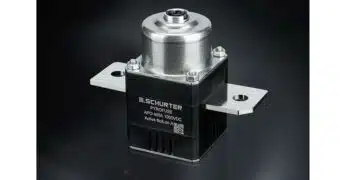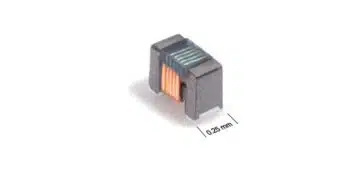KYOCERA AVX, a leading global manufacturer of advanced electronic components engineered to accelerate technological innovation and build a better future, has expanded its line of KAM Series automotive MLCC ceramic capacitors with the addition of 20 new components.
Manufactured using miniaturization and high-capacity atomization technologies developed for smartphones and materials proven to maintain high-reliability performance in automotive environments, KAM Series automotive MLCCs are available in an extensive range of case sizes, capacitance values, and voltage ratings optimized for use in small, densely packed automotive circuits with fast processing speeds.
These compact and lightweight surface-mount components minimize board space requirements and deliver capacitance values high enough to reduce capacitor component counts, both of which are essential to helping automotive engineers overcome some of the many challenges posed by evolving electric vehicle (EV), advanced driver assistance system (ADAS) and automated driving system (ADS) designs.
KAM Series automotive MLCCs are designed, manufactured, and tested to ensure that they meet the high quality and reliability standards of automotive industry applications. They are compliant with the AEC-Q200 Stress Test Qualification for Passive Components standard, manufactured in IATF, QS9000, and VDA 6.4-approved facilities, and continuously tested in quality assurance (QA) laboratories to ensure superior quality and performance. QA methods include 100% visual inspection, increased sampling for accelerated wave soldering, and lot-by-lot reliability testing. All KAM Series automotive MLCCs are also RoHS compliant and designed to be operated below the rated voltage.
The latest expansion of the KAM Series automotive MLCCs includes 20 new components. The new releases are available in four case sizes (0201, 0402, 0603, and 0805) with thicknesses extending from 0.33mm to 1.45mm, nickel/tin terminations, two dielectrics (X7R and X7T), four voltage ratings (4, 6.3, 10, and 16V), capacitance values extending from 0.1–22µF (±10%), and 7” reels loaded with paper or embossed plastic tape.
Ideal applications for the new KAM Series automotive MLCCs include electric vehicle (EV), automated driver assistance system (ADAS), and automated driving system (ADS) engine control units (ECUs), powertrains, central gateway (CGW) communication nodes, cluster heads-up displays (HUDs), door control units (DCUs), cameras, radar, LiDAR, memory, CPU/MPU decoupling, and other low-voltage safety systems with space constraints and high capacitance demands. They are also well suited for use in high-reliability applications outside of the automotive industry.
With this latest extension, the KAM Series automotive MLCCs is now available with nine case sizes (0201, 0402, 0603, 0805, 1206, 1210, 1808, 1812, and 2220), two termination styles (nickel/tin and FLEXITERM), six dielectrics (C0G/NP0, X7R, X7T, X8R, X8L, and X8G), 16 voltages extending from 4V to 3,000V, capacitance values extending from 0.5pF to 22µF, eight capacitance tolerances spanning¬ ±0.1pF to ±20%, and 7” and 13” reels loaded with paper or embossed plastic tape.
As such, KAM Series MLCCs are also well suited for use in hybrid automotive battery control, inverter, converter, motor control, and water pump applications; on-engine automotive applications; hybrid electric commercial applications, including emergency circuits, sensors, and temperature regulation devices; oil exploration applications; and other applications with a 150°C operating requirement.
“KYOCERA AVX has been a trusted supplier of automotive MLCCs for several decades and is very proud to introduce the new small-case-size, high-capacitance-value, wide-voltage-range, and AEC-Q200-qualified KAM Series automotive MLCCs to market,” said Kensuke Ikeda, Senior Manager – MLCC Development, KYOCERA Corporation.
“The number of MLCCs mounted in circuits related to EV, ADAS, and autonomous driving systems is steadily increasing, accelerating market demand for miniature components, and the voltage ratings of the ICs employed in these systems is decreasing, driving new demand for low-voltage MLCCs. Our evolving line of KAM Series capacitors satisfy these market demands. For example, when 5VDC is applied to our 0805 X7R dielectric MLCC rated for 10V and 10µF, it maintains 86.3% of its capacitance due to excellent DC bias characteristics. In addition, KAM Series MLCCs are precision engineered, manufactured, and tested to provide optimal solutions for EV, AD, and ADAS circuits and will continue to satisfy evolving automotive market demands with future series extensions.”






























